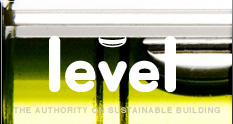- Home
- Site Analysis
- Site Use
- Passive Design
- Water
- Material Use
- Energy
- Wet Areas
- Health and Safety
- Other Resources
Passive Design
Designing the building and the spaces within it to benefit from natural light, ventilation and even temperatures.
Options for roof insulation
Ceilings/roof spaces are typically insulated using blanket/segment or loose fill insulation, although higher-performance roof details may include rigid insulation.
On this page:
- Timber-framed roofs
- Steel-frame roofs
- Access hatches to accessible roof spaces
- Skillion roofs
Blanket or mat (segmented) insulation is available in glasswool (fibreglass), wool, polyester, wool/polyester mix, and mineral wool.
Loose fill insulation is available in glasswool, mineral wool, macerated paper and wool.
Rigid insulation includes PIR (polyisocyanurate), XPS polystyrene and SIPS (structurally insulated panels).
For information about performance, durability and environmental properties of each material, see our insulation materials factsheet(PDF) and the materials section of this site.
H1/AS1 and H1/VM1 5th edition amendment 1 have replaced the previous 4th edition documents. The 4th edition can no longer be used to demonstrate Building Code compliance in building consent applications.
Timber-framed roofs
Install ceiling space insulation between joists over the ceiling lining where possible as this is where the greatest heat loss occurs. A second layer should be laid over the framing to reduce the effect of thermal bridging.
Steel-framed roofs
The general principles of roof insulation are the same for steel-framed roofs, although there are some slight changes required to where and how insulation is installed in practice for the best results. For more information see the BRANZ publication Building Basics Lightweight Steel Framing.
Access hatches to accessible roof spaces
Access hatches installed in ceilings to give homeowners entry to the roof space have commonly been a weak point in ceiling performance, by not being insulated and by having gaps in their construction that allow air and moisture to move from living spaces into the roof space. This moisture can potentially lead to condensation and mould problems in the roof space.
Proprietary access hatches that are both airtight and insulated are readily available. These are more likely to perform better than hatches made in the traditional way.
Skillion roofs
For skillion roofs with exposed rafters, install insulation over the ceiling lining between purlins – purlins must be sized to provide sufficient depth for the required thickness of insulation plus a 25 mm minimum air gap between the insulation and the flexible roofing underlay.
For skillion roofs with concealed rafters, install insulation between rafters – the combined rafter/purlin depth is likely to be sufficient to ensure that a 25 mm minimum air gap is achieved.
Note: For both exposed and concealed rafter skillion roofs, an air barrier must be installed over a timber-boarded ceiling to prevent air movement into the roof framing.
Updated: 02 May 2023

